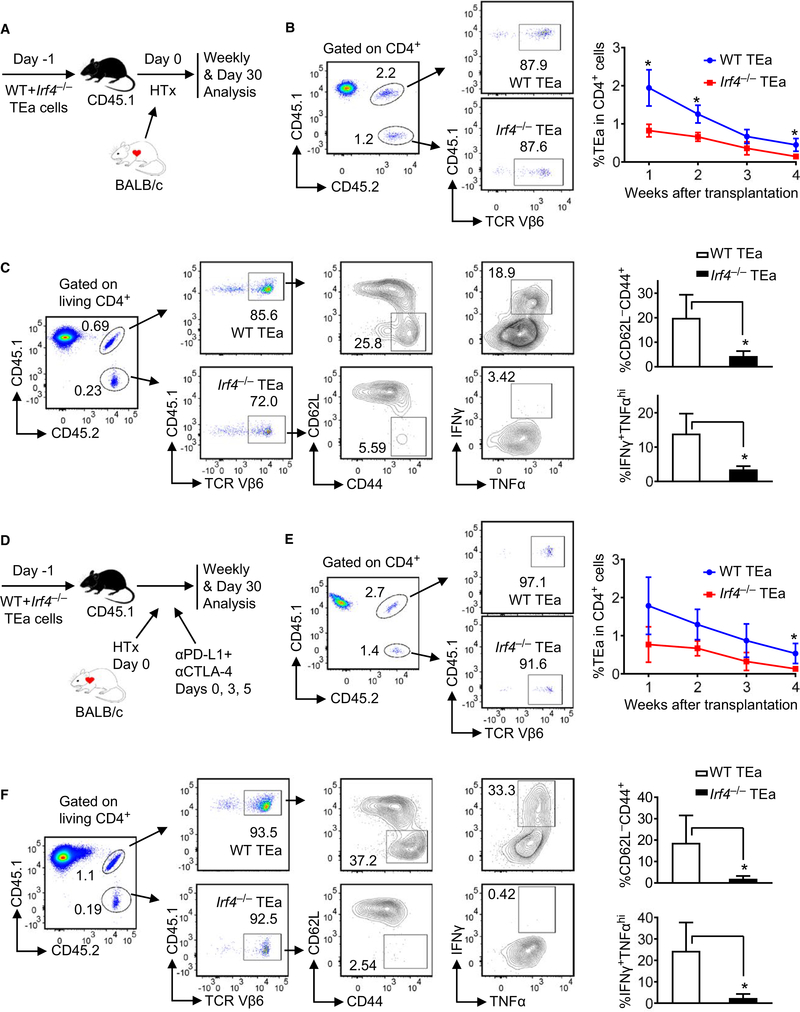FIGURE 5.
Checkpoint blockade does not restore effector memory cell generation from alloreactive Irf4−/− CD4+ T cells. CD45.1+ B6 mice were adoptively transferred with mixed splenocytes containing a 1:1 ratio of CD45.1+CD45.2+ WT TEa and CD45.2+ Irf4−/− TEa cells on day ‐1, transplanted with BALB/c hearts on day 0, and left untreated (A‐C) or treated with αPD‐L1 + αCTLA‐4 (D‐F) on days 0, 3, and 5. A, Schematic of the experimental design. B, Flow cytometry plots display the gating strategy detecting co‐transferred CD45.1+CD45.2+TCR Vβ6+ WT TEa and CD45.1−CD45.2+TCR Vβ6+ Irf4−/− TEa cells in peripheral blood at 1 week post‐grafting. The line graph shows WT Tea and Irf4−/− TEa cell frequencies in peripheral blood weekly after transplantation. C, Splenocytes were analyzed on day 30 post‐grafting. Shown are the gating strategy detecting TEa cell populations, and the percentages of CD62L−CD44+ and IFN‐γ+TNF‐αhi cells within WT TEa and Irf4−/− TEa cell populations. D, Schematic of the experimental design, with αPD‐L1 + αCTLA‐4 treatment. E, WT Tea and Irf4−/− TEa cell frequencies in peripheral blood at 1 week post‐grafting (flow cytometry plots) and weekly after transplantation (line graph). F, The percentages of CD62L−CD44+ and IFN‐γ+TNF‐αhi cells within WT TEa and Irf4−/− TEa cells in spleens at day 30 post‐grafting. Data are mean ± SD (n = 3). *P < .05

